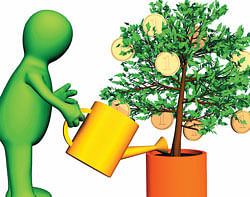How many common trees can you recognise? This is a good time to start because it is Spring.

If you’ve ever tried to identify a bird, you’ll know that it is not that easy. For one, you can hardly see the bird at first, especially if it is small and is hidden in the foliage of a tree. Second, as you try and focus on its characteristics, it hoppity-hops away from you.
And then, as you try to see whether its beak is indeed red, it flies away. But trees aren’t like that. They are huge and they don’t run away from you. Yet, how many common trees can you recognise? If you’re like I used to be, I’m sure you can just count them on just the fingers of one hand – coconut, banyan, gulmohar, and maybe one or two more.
But if you’re interested in getting to know your tree neighbours, now is the best time to start, because it is Spring. Though trees can be identified by their leaves, bark, fruits and seeds, perhaps the easiest way to identify trees is by their flowers. And Spring is when most trees are bursting with flowers at their colourful best.
*Jacaranda: You can’t miss these lovely mauve flowers on tall trees. They look like hazy purple smoke when seen from afar. And they make the best flower carpets!
*Tabebuia: With bright yellow, thick clusters of tubular flowers, they look spectacular, blazing bright against the cloudless blue sky. There are pink Tabebuia flowers too, though not as common as their yellow friends. These trees aren’t very tall and quite undistinguished when they are not in bloom.
*Cherry Blossom: They have pale pink flowers that look as pretty as a picture. They cover the entire medium-sized tree with their blossoms.
*Rain tree: These beautiful trees are large with a symmetrical umbrella-like canopy. They are frequently planted to line avenues. The flowers are pink-and-white, and look like little brushes.
*Bottlebrush: The red flowers resemble the brushes that are used to clean bottles. The leaves have a unique fragrance.
*Gulmohar (‘Kattikai’): They have spectacular flaming red flowers. You can recognise these trees even when they are not in bloom, by their gnarled trunks and tiny pinnate leaves. Their pods are long and curved, like a sword, and that is why it is known as ‘kattikai’ — ‘katti’ meaning sword in Kannada.
*Copperpod: Small yellow flowers and distinctive brown pods make this tree easy to recognise. Its leaves are like that of the Gulmohar.
*Mango: You might recognise mango trees at other times too due to the familiar shape of the leaves, but in this season, the young and tender leaves are reddish and little white flowers are in bloom. Some also have raw mangoes growing on them already.
There are plenty of other trees like the flaming orange African Tulip and yellow Cassia and Laburnum that flower in other seasons, and there are many trees that flower in winter. You can look out for them during those seasons.
Leafy clues
Other common trees that you can recognise even without the flowers are:
*Bauhinia (‘Basavanapaada’): The leaves of this tree are shaped somewhat like apples, or, like the Kannada name suggests, like the hoof-print of a bull. The flowers are long-petalled and white, pink, or purple. Their pods split open and small brown seeds burst out of them during season.
*Pongamia (‘Honge’): These trees have small leaves that all point downwards and ripple in the wind. It is particularly cool in the shade of this tree, perhaps because of the thickness of its foliage.
*Eucalyptus (‘Nilgiri’): They are very tall trees with a light coloured, almost cream-grey, peeling bark. The long, thin leaves and the seeds are fragrant. Sometimes, you can smell the eucalyptus before you see it.
*Peepul (‘Arali’): The unique shape of its leaves, with their long pointed tips, and the way they shimmer in the sunshine, makes it easily recognisable. Religious beliefs are associated with this tree and it usually has a platform built around it, making it even harder to miss.
*Banyan: This is another tree that is impossible to miss because of the distinctive roots that drop down from its branches.
*Jackfruit: It has large, round, waxy leaves, and of course, huge jackfruits grow from its trunk.
*Neem: The foliage is light green and the leaves have serrated edges. The flowers are small and white.
*Cannonball tree (‘Nagalinga pushpa’): Large, spherical fruits, that look like cannons, give this tree its name. The red, orange and pink flowers are unique and beautiful, and the central part of the flower is shaped like the hood of a snake, as if protecting something underneath it.
This list is, by no means, complete. If you find a tree you cannot identify, ask the elders in your family – your grandparents, grand uncles and aunts – because they seem to have been more in touch with their surroundings than we are.
If they know the name only in your mother tongue, no problem. Google it and chances are that you’ll find the English name as well as the botanical name, and the pictures too, of course!